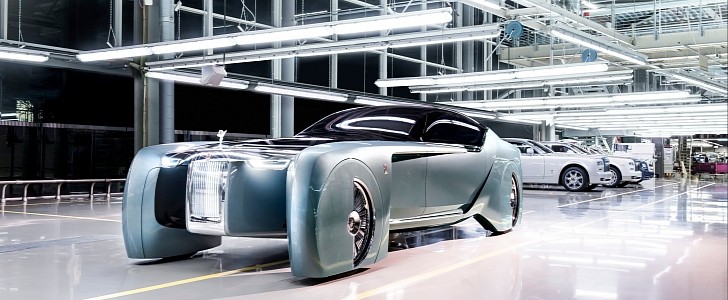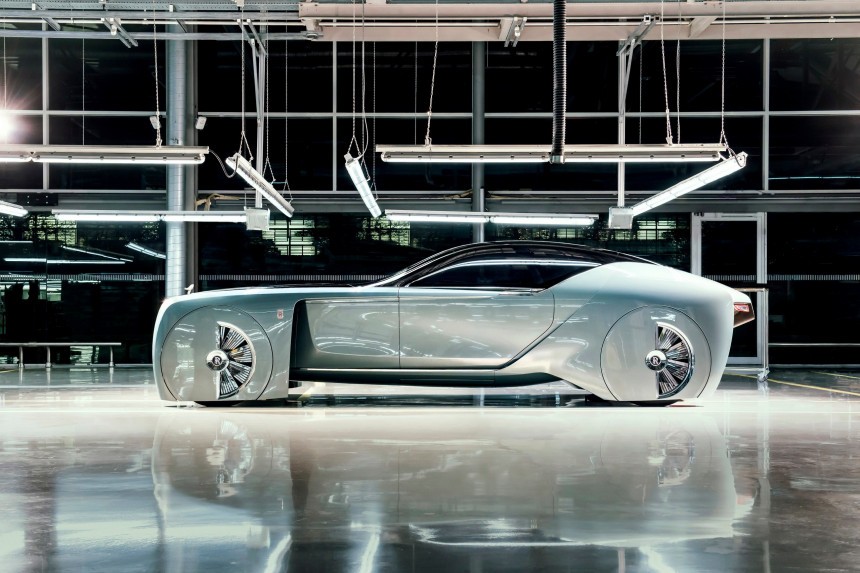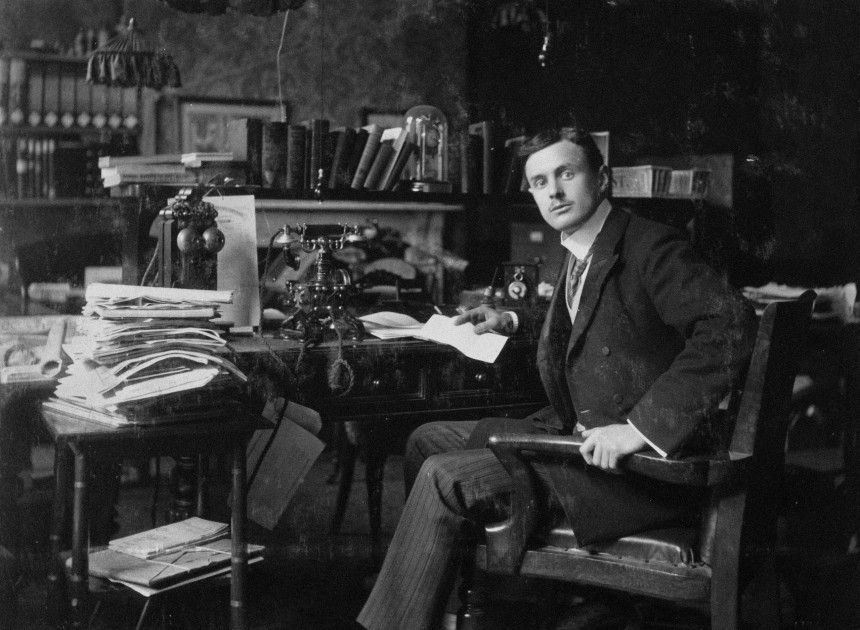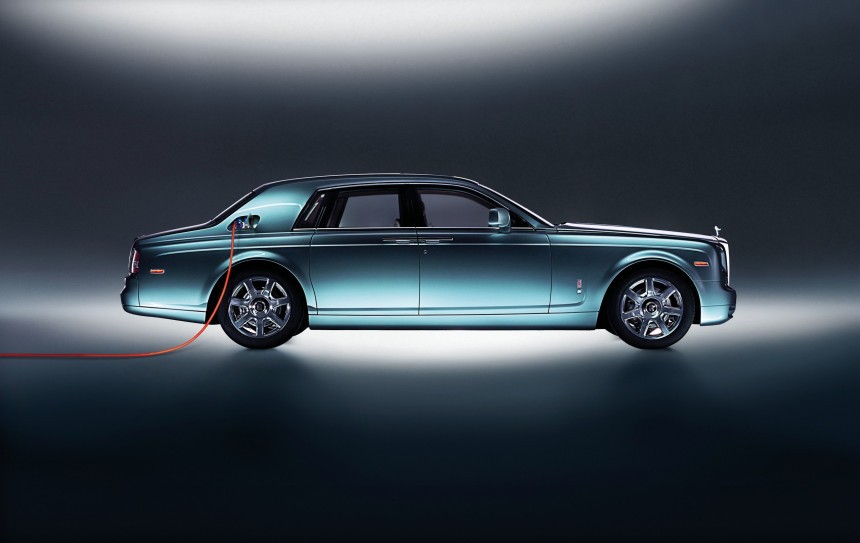In 1900, Charles Rolls, the founding forefather of Rolls-Royce, made a prophecy about automotive electrification and it appears his vision is about to come true.
Now, more than 120 years later, CEO of Rolls-Royce, Torsten Müller-Ötvöstom, made a promise to the public that the iconic luxury carmaker would bring the first fully electric Rolls-Royce to market within the current decade. It appears he remains on track to fulfill that vision and that promise as the company is poised to create a "super-luxury" EV.
"In this ground-breaking endeavor, we are drawing on a remarkable heritage, unique in our industry. Our founders and those who worked alongside them in the marque's formative years were all important pioneers of electric power, as well as their era's leading experts in automotive engineering," said Müller-Ötvöstom. "As we herald a new electric future at Rolls-Royce, I am proud and humbled to share their inspiring stories, which have never been told in one place before, and shine a fresh and fascinating light on our company's earliest days."
The CEO says Rolls-Royce has heralded an electrification strategy in three simple statements: the marque will introduce an all-electric car this decade. It will be a pure BEV, not a hybrid of any kind, and it will be launched only when the time is right, and every element meets Rolls-Royce's technical, aesthetic, and performance standards.
The company says the internal combustion engine was not "the default" means of propulsion for the earliest motor cars. During the 1900s, engineers and manufacturers were undecided on what would prove to be the ultimate winners as to systems to drive cars forward: internal combustion, steam power, or electric power.
While steam power proved less practical for use in motor cars, it was left to proponents of internal combustion and electricity to create the most efficient and practical solution.
Rolls-Royce says electric power fell out of favor for a pair of reasons: an impractical limit on range and the lack of a useful charging infrastructure.
But according to the company, the characteristics that first made electric power attractive to automakers - silent operation, instant torque, tremendous power, and the absence of exhaust fumes - are now extremely practical for use in luxury motor cars.
According to Müller-Ötvöstom, the “perfect suitability of electric power” underpins the marque's explicit commitment to deliver an all-electric Rolls-Royce this decade. And to make it happen, he says the company will draw upon a unique history and heritage and a connection with electric power that pre-dates the company itself and features men such as Sir Henry Royce himself.
It happens that Henry Royce was one of the world's first electrical engineers and following an apprenticeship with the Great Northern Railway, he worked briefly as a toolmaker at Greenwood & Batley in Leeds where he became interested in electrical power.
By 1881, Royce had joined the Electric Light & Power Generating Company (EL&PG) in Southwark. After attending evening classes in electrics at the City & Guilds of London Institute, one year later, aged just 19, Royce moved to the EL&PG's new subsidiary, the Lancashire Maxim-Weston Electric Co. Ltd, as Chief Electrician. When the company ceased operations, Royce began an enterprise himself, F H Royce & Co. The company made electrical appliances including doorbells, lamps, fuses and switches. The success of those first efforts led to the company producing larger, more complex devices including dynamos, electric motors and winches.
By 1902, Royce supplied electric motors to Pritchett & Gold, a London-based battery-maker that diversified into building electric cars.
In an interview published by The Motor-Car Journal, Charles Rolls described electric propulsion for cars this way:
“The electric car is perfectly noiseless and clean,” he said. “There is no smell or vibration, and they should become very useful when fixed charging stations can be arranged. But for now, I do not anticipate that they will be very serviceable – at least for many years to come.”
He then addressed that issue by providing a battery-charging station at his car showroom on Lillie Road in Fulham to service the electric Broughams on the London streets of the day.
Now the company says those pioneering founding figures will be honored with the first production fully electric Rolls-Royce after a decade of research and development of vehicles like the Phantom Experimental Electric (EE), codenamed 102EX; a fully operational and road-legal battery-electric version of the company’s pinnacle product.
While the Phantom EE was never intended for production, it has served as a test-bed for clients, VIPs, the media, and enthusiasts to experience electric propulsion.
The test vehicle's 6.75-litre V12 gasoline engine and gearbox were replaced with a lithium-ion battery pack and two electric motors mounted on the rear sub-frame. The new EV test vehicle put out a maximum power output of 388hp (290kW) and torque of 590 ft-lb (800Nm), compared to 453hp (338kW) and maximum torque of 531 ft-lb (720Nm).
In 2016, Rolls-Royce followed up with the 103EX, a radically innovative concept car meant to define the marque's vision of luxury mobility for the future.
"In this ground-breaking endeavor, we are drawing on a remarkable heritage, unique in our industry. Our founders and those who worked alongside them in the marque's formative years were all important pioneers of electric power, as well as their era's leading experts in automotive engineering," said Müller-Ötvöstom. "As we herald a new electric future at Rolls-Royce, I am proud and humbled to share their inspiring stories, which have never been told in one place before, and shine a fresh and fascinating light on our company's earliest days."
The CEO says Rolls-Royce has heralded an electrification strategy in three simple statements: the marque will introduce an all-electric car this decade. It will be a pure BEV, not a hybrid of any kind, and it will be launched only when the time is right, and every element meets Rolls-Royce's technical, aesthetic, and performance standards.
The company says the internal combustion engine was not "the default" means of propulsion for the earliest motor cars. During the 1900s, engineers and manufacturers were undecided on what would prove to be the ultimate winners as to systems to drive cars forward: internal combustion, steam power, or electric power.
Rolls-Royce says electric power fell out of favor for a pair of reasons: an impractical limit on range and the lack of a useful charging infrastructure.
But according to the company, the characteristics that first made electric power attractive to automakers - silent operation, instant torque, tremendous power, and the absence of exhaust fumes - are now extremely practical for use in luxury motor cars.
According to Müller-Ötvöstom, the “perfect suitability of electric power” underpins the marque's explicit commitment to deliver an all-electric Rolls-Royce this decade. And to make it happen, he says the company will draw upon a unique history and heritage and a connection with electric power that pre-dates the company itself and features men such as Sir Henry Royce himself.
By 1881, Royce had joined the Electric Light & Power Generating Company (EL&PG) in Southwark. After attending evening classes in electrics at the City & Guilds of London Institute, one year later, aged just 19, Royce moved to the EL&PG's new subsidiary, the Lancashire Maxim-Weston Electric Co. Ltd, as Chief Electrician. When the company ceased operations, Royce began an enterprise himself, F H Royce & Co. The company made electrical appliances including doorbells, lamps, fuses and switches. The success of those first efforts led to the company producing larger, more complex devices including dynamos, electric motors and winches.
By 1902, Royce supplied electric motors to Pritchett & Gold, a London-based battery-maker that diversified into building electric cars.
In an interview published by The Motor-Car Journal, Charles Rolls described electric propulsion for cars this way:
“The electric car is perfectly noiseless and clean,” he said. “There is no smell or vibration, and they should become very useful when fixed charging stations can be arranged. But for now, I do not anticipate that they will be very serviceable – at least for many years to come.”
He then addressed that issue by providing a battery-charging station at his car showroom on Lillie Road in Fulham to service the electric Broughams on the London streets of the day.
While the Phantom EE was never intended for production, it has served as a test-bed for clients, VIPs, the media, and enthusiasts to experience electric propulsion.
The test vehicle's 6.75-litre V12 gasoline engine and gearbox were replaced with a lithium-ion battery pack and two electric motors mounted on the rear sub-frame. The new EV test vehicle put out a maximum power output of 388hp (290kW) and torque of 590 ft-lb (800Nm), compared to 453hp (338kW) and maximum torque of 531 ft-lb (720Nm).
In 2016, Rolls-Royce followed up with the 103EX, a radically innovative concept car meant to define the marque's vision of luxury mobility for the future.











